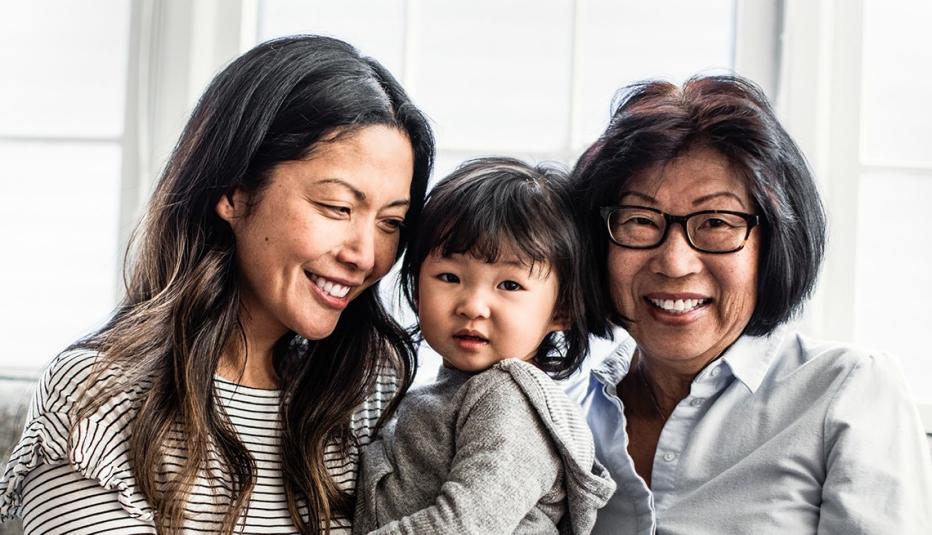AARP Hearing Center
Reimagining family leave policies for caregiving during the pandemic is critical for working women.


Caregiving during the pandemic has heightened the pressure facing workers, especially women, as they navigate changing workplace policies and increased demands at home, new research reveals.
The research, conducted in two parts by S&P Global in partnership with AARP, included a survey of 1,573 individuals who work at large companies, and in-depth interviews with female executives. A subsequent smaller survey of 53 companies in the S&P 1200 found strong corporate leave policies tend to benefit the business’ bottom line, but it also highlighted notable discrepancies in approaches to benefits for caregivers of adults and parents of young children. This study showed that employers may be less familiar with the issue of family caregiving and more education is needed.
The landscape revealed is both encouraging and sobering.
Flexible schedules are the new work week.
Not surprisingly, researchers found companies are embracing flexibility, allowing telework and nontraditional hours. Close to 37% of companies, regardless of size, have added flexible work hours to their policies since the pandemic began, the survey found.
With flexible locations and hours, turnover tends to be lower, the data showed, making it a key to helping employees cope with the demands of work and home.
Some employers have also embraced family caregiving benefits that extend beyond offering parental leave to new parents, progress that could help caregivers of adults and children well beyond the pandemic.
But the follow-up research found troubling discrepancies between support for parents and caregivers of adults. While 66% percent of respondents said they were very supportive of parents with children age five or younger, just 32% of companies said they were very supportive of family caregivers. Similarly, while 60% of respondents said benefits for parents are a high priority or one of the top priorities at their company, only 30% said the same for family caregivers of adults.
The pandemic has heightened caregiving duties.
As companies quickly adjusted to the need for flexibility, workers still had to navigate a tug-of-war between loved ones’ needs and a job’s demands as those worlds collided at the kitchen table. But embracing work-from-home policies and flexible hours may not be enough to quell the exit of employees, and women in particular, from the workforce, the researchers warn.
More than half of parents and family caregivers surveyed said since the pandemic they spend more hours at home taking care of children or providing family care to adults. Nearly 30% of respondents reported a strong increase in stress, and 43% reported a moderate increase.
While the researchers identified the burden facing women, they also acknowledged the toll on men. As caregiving needs have grown, 70% of men compared to 61% of women said they had at least some difficulty balancing work and their home life.
Yet the report points to a looming disaster for women. The report suggests that addressing the gender pay gap and requiring family leave policies to mandate paying employees while they care for a sick loved one would help ease the burden. Additionally, the pandemic has led companies to rethink the work week.
Caregiving-friendly leave policies support the bottom line.
Recognition is growing that generous policies, including offering family friendly benefits, produce higher returns. Companies are beginning to see the connection between meeting employee’s needs for paid sick leave to care for a loved one and improved profitability.
The perception of who is a caregiver, however, is critical. Differences between family caregivers of adults and parent caregivers of young children are persistent. While 66% of respondents said supporting family caregivers of adults improves the bottom line, 74% of respondents believe supporting parents of children age 5 and younger results in stronger financial outcomes for the company.
The biggest concern, and the most likely negative impact on women, is that the expansion of caregiver friendly benefits — including paid sick days and flexible work hours — will be temporary, reverting back to previous policies once the pandemic subsides. Flexibility has played a key role in keeping a number of women in the workforce, yet less than half (44%) of companies plan to continue offering paid sick days.
Methodology
The S&P Global/AARP survey included 51% men and 49% women who work for a company with more than 1,000 employees. It was fielded between August 20 and September 8, 2020. The interviews were conducted over the summer by S&P Global, and the Equileap data relied on information gathered between 2018 and 2020.
The follow-up S&P Global/AARP survey included 53 U.S. companies in the S&P 1200 Index and was fielded between July 23 and October 1, 2020. Due to the small sample size, these results should be interpreted with caution. It focused on U.S.-based companies because there are federally mandated family leave policies across much of the rest of the developed world.
For more information, please contact Laura Skufca, lskufca@aarp.org. For media inquiries, please contact media@aarp.org.































































